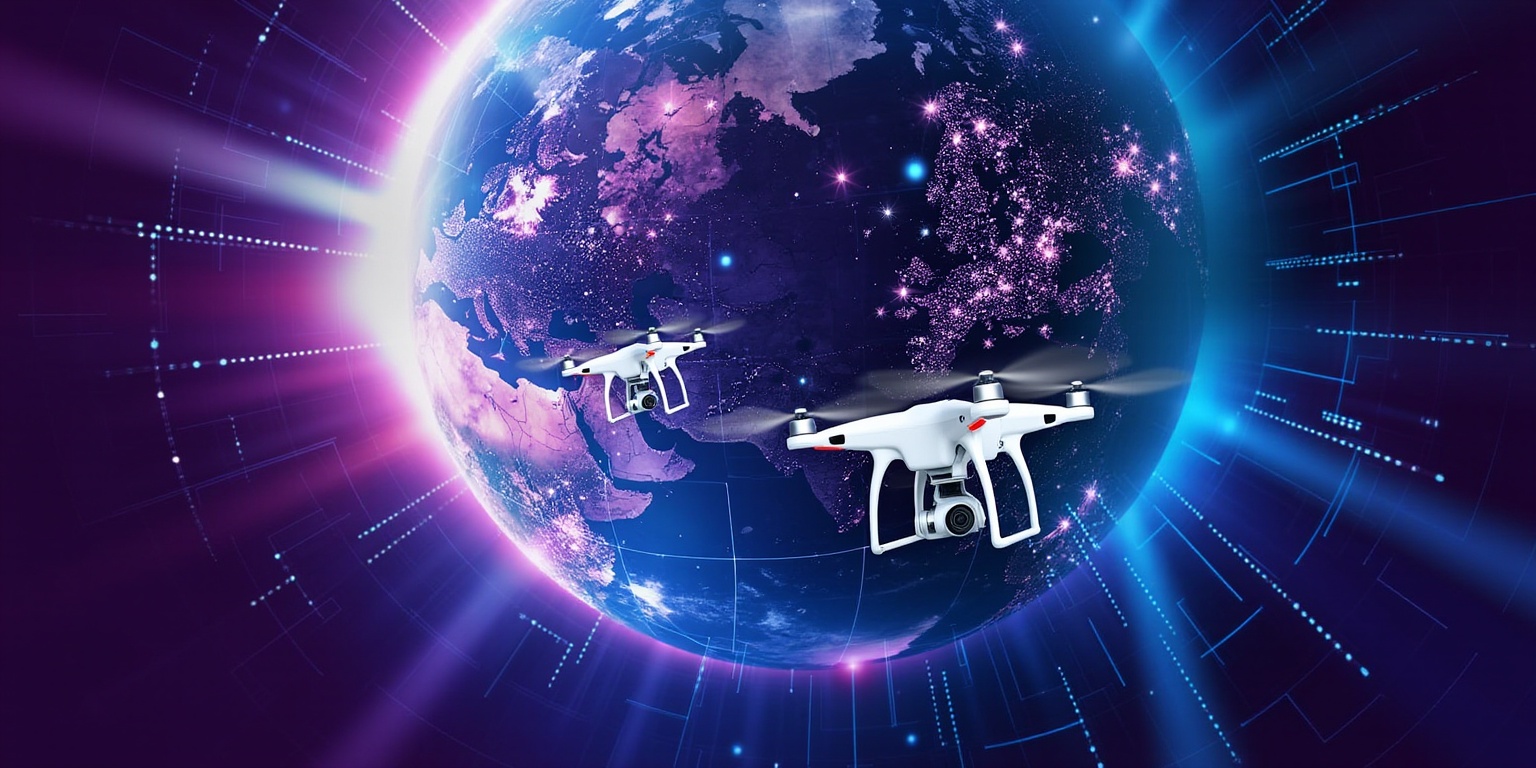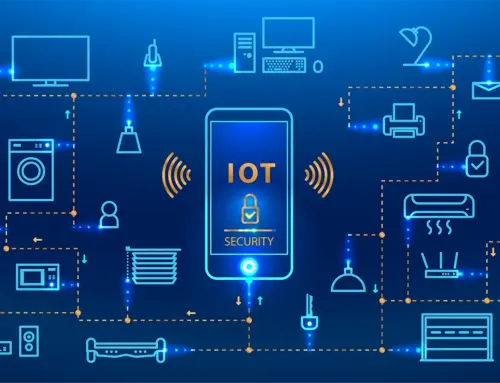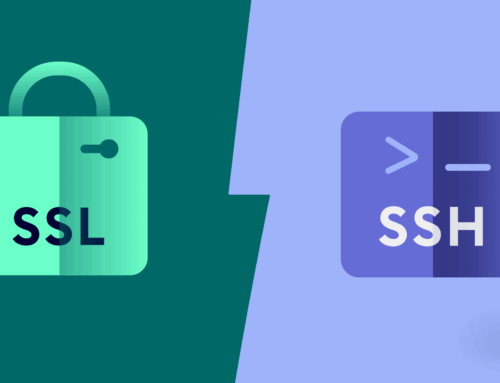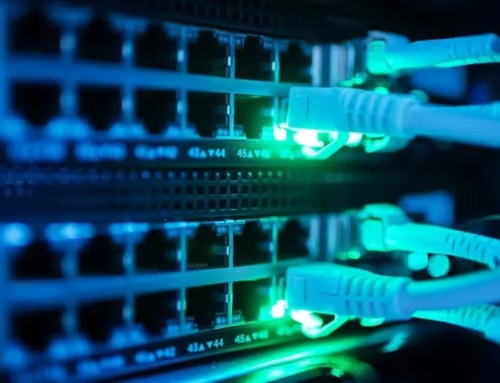
Cybersecurity in Drone Operations.
Drone Cybersecurity: Protecting Drone Technology from Cyber Threats
The rapid evolution of drone technology has ushered in a new era of innovation across various sectors, from surveillance to commercial applications. However, this technological advancement also introduces significant cybersecurity risks, particularly for commercial drone operations. As commercial drones become integral to vital operations, ensuring their security and integrity is paramount. Our focus is to safeguard these unmanned aerial vehicles from potential cyber threats, ensuring their safe and secure operation in the modern digital landscape.
Understanding Drone Cybersecurity
What is Drone Cybersecurity?
Drone cybersecurity UAS refers to the strategic measures and practices employed to protect unmanned aerial vehicles from cyber threats and vulnerabilities. As drones, or unmanned aircraft systems, become more prevalent in both commercial and personal use, the need to secure their communication systems, data transmission, and ground control stations intensifies. Ensuring robust cybersecurity measures is essential to prevent unauthorized access, data breaches, and potential cyber attacks that could compromise the integrity and functionality of drone systems.
The Importance of Cybersecurity in the Drone Industry
The drone industry is rapidly expanding, with unmanned aerial systems being deployed in diverse fields such as agriculture, logistics, and emergency response. Ensuring cybersecurity in this domain is crucial, as drones often handle sensitive data and perform critical operations. Cybersecurity measures protect against potential security threats that could disrupt drone operations, endanger public safety, or lead to significant financial losses. Prioritizing cybersecurity ensures that drones can be safely integrated into existing infrastructures, providing peace of mind to operators and stakeholders alike.
Key Cybersecurity Challenges Facing Drone Technology
Drone technology faces several cybersecurity challenges, including vulnerabilities in communication systems, the risk of unauthorized access, and potential cyber attacks on UAV systems. The complexity of drone networks and the need for secure communication channels present unique challenges for maintaining secure drone operations, especially with autonomous drones. Additionally, with the rise of the Internet of Drones, ensuring comprehensive security measures becomes even more critical. Addressing these challenges requires continuous development of cybersecurity solutions tailored to the evolving landscape of unmanned aerial vehicles.
Common Cybersecurity Vulnerabilities in Drones
Types of Vulnerabilities in Drone Communication Systems
The intricate nature of drone communication systems presents a myriad of vulnerabilities that cyber attackers might exploit, emphasizing the need for drone detection technologies. Weaknesses in these systems can lead to unauthorized interception of sensitive data, compromising the integrity of drone operations. Secure communication channels are essential to prevent data breaches and ensure the confidentiality of information transmitted between the drone and its ground control station. Addressing these vulnerabilities requires robust cybersecurity solutions tailored to the unique demands of unmanned aerial systems.
Unauthorized Access Risks in Drone Operations
Unauthorized access is a significant risk in drone operations, threatening the security and privacy of sensitive information. Cybersecurity measures must be implemented to prevent malicious entities from gaining control over drone systems, which could lead to disruptions in operations or even cause physical harm. By ensuring stringent access controls and implementing advanced authentication mechanisms, drone manufacturers can safeguard these unmanned aircraft systems against unauthorized access and potential cyber attacks.
Size of the Drone and Its Impact on Security Vulnerabilities
The size of a drone can significantly impact its security vulnerabilities and the specific security requirements for its operation. Smaller drones, often used in commercial and surveillance applications, may lack the robust cybersecurity infrastructure found in larger unmanned aerial vehicles. This can make them more susceptible to cyber threats, as limited onboard resources may restrict the implementation of comprehensive security measures and intrusion detection systems. Ensuring that drones of all sizes are equipped with effective cybersecurity protocols is paramount to maintaining their secure and reliable operation in various drone applications.
Security Measures for Drone Technology
Implementing Effective Cyber Security Protocols
Implementing effective cybersecurity protocols is crucial to safeguarding drone technology from potential threats. Companies like Teamwin Global Technologica Pvt Ltd provide advanced security technologies such as firewalls, endpoint protection, and privileged access management to ensure the integrity of drone systems. Their managed IT services offer secure infrastructure support, while proactive threat management strategies help anticipate and mitigate cyber risks. By fortifying drone networks with these comprehensive measures, organizations can assure secure and safe operations.
Best Practices for Securing Drone Communications
Securing drone communications involves adopting best practices that prevent unauthorized interception and address security issues related to data breaches. Utilizing encrypted communication channels ensures the confidentiality of the data exchanged between drones and ground control stations. Additionally, employing advanced detection systems can identify and neutralize security threats in real-time. By implementing these best practices, stakeholders in the drone industry can enhance the security of unmanned aerial vehicle operations, fostering trust and reliability in their use of drone technology.
Enhancing Information Security in Drone Operations
Enhancing information security in drone operations is vital for protecting sensitive data and maintaining operational integrity. Tools like Endpoint Privilege (AdminbyRequest) manage local admin privileges and bolster endpoint security. Cloud security and regulatory assurance play a significant role in safeguarding cloud environments and ensuring compliance with necessary standards. By integrating these cybersecurity measures, organizations can fortify their defenses, preventing cyber attacks and ensuring the resilience of their drone systems against evolving security threats.
Addressing Drone Hacking and Cyber Threats
Recognizing Signs of Drone Hacking
Awareness of the signs of drone hacking is crucial for maintaining the integrity and security of unmanned aerial vehicle operations. Indicators such as unexpected changes in flight patterns, unresponsive controls, and anomalous data transmissions from ground control stations can signal potential breaches. Recognizing these signs early allows for swift intervention, mitigating the risk of unauthorized access and ensuring the drone system remains secure. Organizations must prioritize training for operators to detect these signs effectively and act promptly.
Case Studies of Cybersecurity Breaches in the Drone Industry
Examining past cybersecurity breaches within the drone industry provides valuable insights into potential vulnerabilities and the effectiveness of existing security measures. High-profile incidents have highlighted weaknesses in drone communication systems and the security risks associated with inadequate cybersecurity protocols. These case studies serve as critical learning tools for drone manufacturers and operators, emphasizing the need for robust cybersecurity solutions and proactive threat management to protect sensitive data and maintain secure UAV operations.
Strategies to Mitigate Cybersecurity Risks
Mitigating cybersecurity risks in drone operations involves implementing a multi-layered approach that encompasses both technological and procedural strategies. By utilizing advanced encryption techniques for secure communication channels and deploying reliable intrusion detection systems, organizations can safeguard against cyber threats in drone applications. Moreover, establishing stringent access controls and regularly updating security protocols are essential practices. Such comprehensive strategies are vital in fortifying drone networks, ensuring safe and secure operations even in the face of evolving cybersecurity threats.
The Future of UAV Security
Emerging Trends in Drone Cybersecurity
The future of UAV security is being shaped by emerging trends that focus on enhancing the resilience of unmanned aerial systems against cyber threats. Innovations in artificial intelligence and machine learning are improving detection systems, enabling drones to autonomously identify potential security threats. Additionally, the integration of blockchain technology offers promising avenues for securing data transmissions within drone networks. Keeping abreast of these trends is essential for maintaining cutting-edge drone cybersecurity and adapting to the ever-evolving security risks in the threat landscape.
The Role of Regulations in Enhancing Drone Security
Regulatory frameworks play a pivotal role in enhancing drone security This can be achieved by establishing industry-wide standards for cybersecurity measures in drone use. Governments and regulatory bodies are increasingly focusing on creating comprehensive policies that mandate secure communication protocols and robust cybersecurity infrastructure for unmanned aircraft systems. Compliance with these regulations not only ensures the protection of sensitive information but also fosters trust and reliability in the use of drone technology across various sectors. Adhering to these security requirements is essential for safeguarding UAV operations from potential cyber threats.
Collaborative Approaches to Strengthen Drone Cybersecurity
Strengthening drone cybersecurity requires collaborative efforts among industry stakeholders, government agencies, and cybersecurity experts. By fostering partnerships that focus on sharing knowledge, resources, and best practices, the drone industry can collectively address cybersecurity vulnerabilities and enhance defense mechanisms. Initiatives such as joint research projects and cybersecurity workshops promote innovation in drone applications and the development of robust solutions. Such collaborative approaches are vital in creating a unified defense against cyber attacks, ensuring the secure and reliable operation of unmanned aerial systems.
5 Surprising Facts About Cybersecurity in Drone Operations
- Drones can be hacked from miles away, making cybersecurity a critical concern for operators.
- Many commercial drones lack basic encryption, leaving them vulnerable to unauthorized access.
- Cyberattacks on drone systems can result in hijacking, leading to potential safety risks and data breaches.
- Regulatory bodies are increasingly emphasizing the importance of cybersecurity measures in drone operation guidelines.
- The integration of AI in drone operations raises new cybersecurity challenges, as AI systems themselves can be targets for cyber threats.
What are the cybersecurity challenges in drone operations?
The cybersecurity challenges in drone operations encompass a range of issues, including unauthorized access to drone systems, vulnerabilities in communication systems, and the potential for cyber attacks that can compromise both security and privacy. As drones become increasingly integrated into various industries, the need for robust cybersecurity measures to protect sensitive data transmitted during operations becomes critical.
How does drone technology impact cybersecurity?
The advancement of drone technology significantly impacts cybersecurity by introducing new vulnerabilities and potential cyber threats. As drones are equipped with advanced sensors and communication systems, they become more susceptible to hacking attempts. Ensuring that these systems have strong security measures is essential to mitigate risks associated with drone operations.
What security measures are recommended for drone manufacturers?
Drone manufacturers are advised to integrate robust cybersecurity measures into their designs, such as encryption for secure communication, intrusion detection systems, and regular security audits. These measures help safeguard against unauthorized access and ensure the integrity of the drone’s operation and data transmission.
What are the security risks associated with UAV operations?
The security risks associated with UAV operations include the potential for data breaches, unauthorized access to flight control systems, and vulnerabilities that can be exploited by cybercriminals. These risks necessitate a comprehensive approach to cybersecurity that includes ongoing assessments and improvements to security requirements.
How can drone communication security be enhanced?
Enhancing drone communication security involves implementing encryption protocols, secure transmission methods, and utilizing robust authentication processes. By focusing on secure communication, operators can reduce the likelihood of interception and manipulation of data transmitted between the drone and ground control stations.
What are the common cybersecurity vulnerabilities in unmanned aerial systems?
Common cybersecurity vulnerabilities in unmanned aerial systems include weak authentication mechanisms, unpatched software, and insufficient encryption. These vulnerabilities can expose drones to cyber threats, making it crucial for operators to regularly update their systems and employ comprehensive cybersecurity measures to protect against potential attacks.
What role does drone forensics play in enhancing security?
Drone forensics plays a vital role in enhancing security by allowing investigators to analyze data from drone operations to identify security breaches and vulnerabilities. This analysis can help in developing better cybersecurity measures and understanding the methods used in potential cyber attacks, thereby improving overall drone security.
What are the security and privacy issues with increasing use of drones?
The increasing use of drones raises several security and privacy issues, including the potential for surveillance without consent, unauthorized data collection, and the risk of sensitive information being compromised. To address these concerns, it is essential for operators to adhere to strict cybersecurity standards and implement policies that protect both security and privacy.





